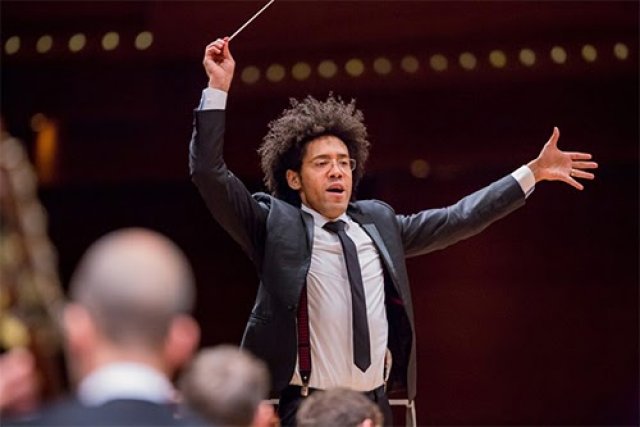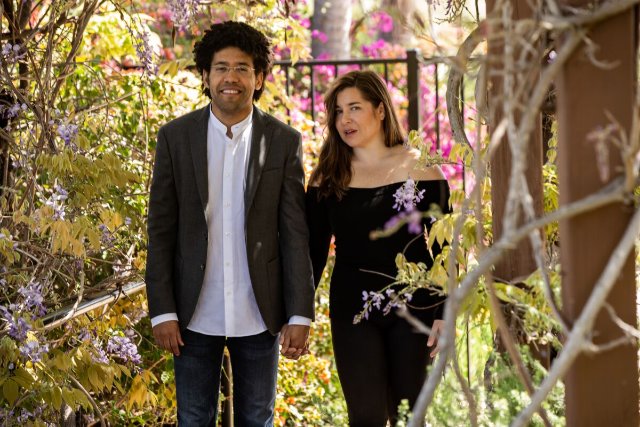San Diego Symphony at Carnegie Hall
Rafael Payare and Alisa Weilerstein Entrance New York
By: Susan Hall - Oct 15, 2023
Many adjectives have been thrown at or glued to the conductor Rafael Payare, who came to Carnegie Hall with the San Diego Symphony he conducts. We haven't heard him live. He has a life-and-death urgency to his music-making. Carlos Simon and Shostakovich seemed so present, so thrilling and so important.
Payare took his first conducting lessons from José Antonio Abreu Anselmi, who created El Sistema in Venezuela. Its graduates include Gustavo Dudamel and Edicson Ruiz, a double bassist in the Berlin Philharmonic. Abreu was committed to making music with the gifted, no matter what their economic or social position. He taught Payare to conduct with his hands. As you watch, Payare’s hands speak. They speak both to the musicians of the orchestra and to the audience.
The right-handed gestures that indicate beats are familiar. It is those of the left that can add a special dimension. Many conductors will point to an instrument or a section, cueing an entrance. Payare often opens his left palm flat as an offering or thrusts a pointed finger to the ceiling for exclamation. This visual representation of the music enhances the listener’s experience.
The San Diego instrumentalists responded with singular perfection. The violin section plays as one, like the storied Cleveland Orchestras’. The percussion instruments trembled rhythmically with the Maetro’s hand.
Carlos Simon’s Wake Up was a New York premiere. It is a spellbinding work, full of surprising darts from quiet to resonating crashes. The work was held together by a two-note phrase the composer says is a wake-up call. The phrase is ‘Wake Up,” and asks us to listen carefully to the music filling a concert hall and enjoy, with the emphasis on joy.
Alisa Weilerstein, the conductor's wife, had her own riser beside him as she performed the solo role in Dvorak’s Cello Concerto in B Minor. It was the last work he wrote in America and combines a certain sadness at departing this country and a longing for home. It is a work in which Dvorak was able to keep the lower tones of this string instrument in the forefront by not only separating them from the orchestra but also by indicating a softer approach from the large group of instruments. Never did the conductor have to ask for a dampening of tone, however.
Dmitri Shostakovich’s famous Fith Symphony had a riotous outing. In thoughtful and revealing program notes, Gerard McBurney explains that this work may not have had only the political connotations usually associated with it. Documents reveal that Shostakovich had fallen in love with Elena Konstantinoskaya, who went off to Spain with a Russian film crew to report on the Civil War. Elena fell in love with and married a Spanish film director. Her wrenching departure may have called forth some of the passion of this work. Payare brought extreme but always satisfying dynamics to the performance.
Listening to Payare, the soloist and the San Diego Symphony in Carnegie Hall, you know that San Diego is not only the most beautiful city in America.


